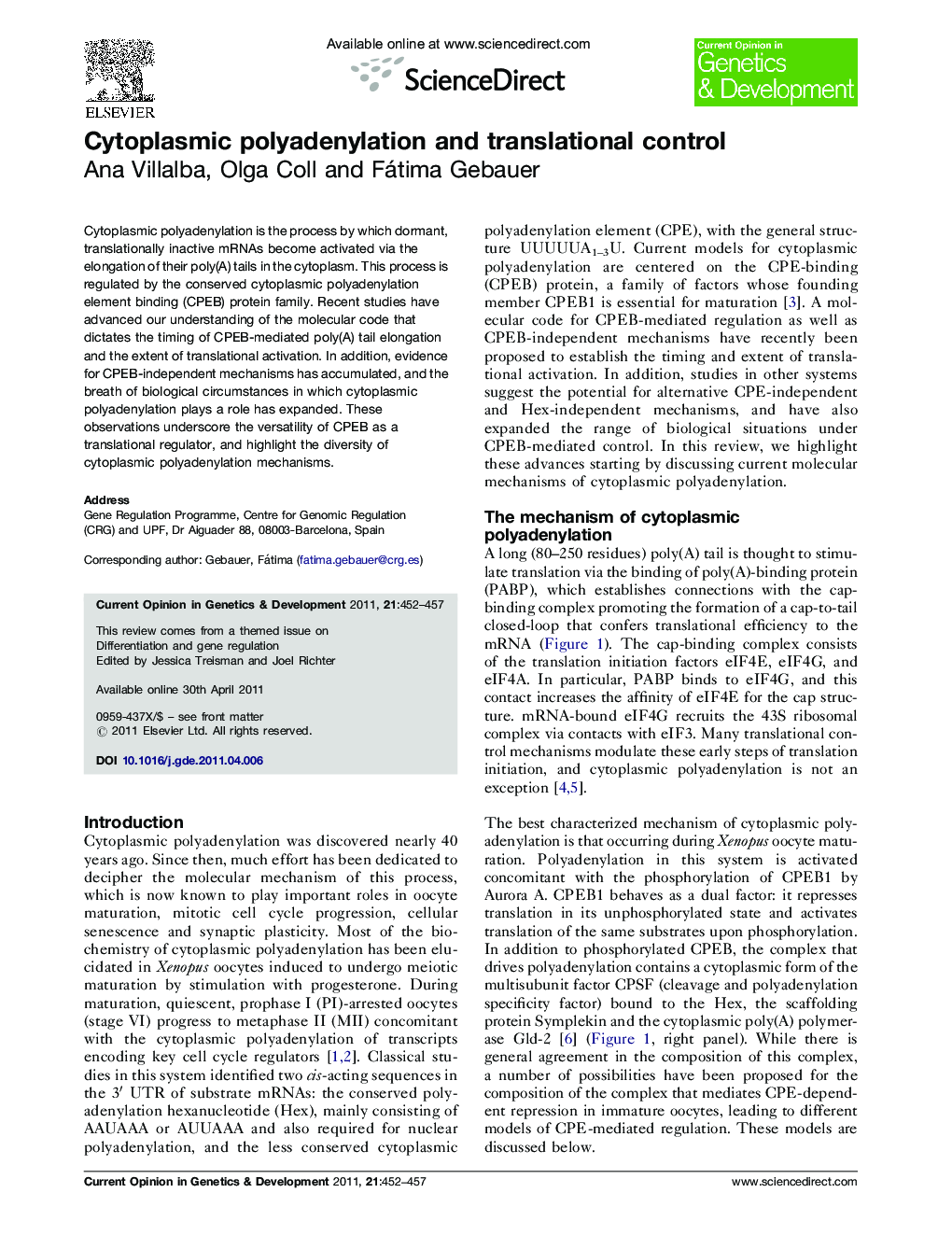| کد مقاله | کد نشریه | سال انتشار | مقاله انگلیسی | نسخه تمام متن |
|---|---|---|---|---|
| 2784978 | 1153921 | 2011 | 6 صفحه PDF | دانلود رایگان |

Cytoplasmic polyadenylation is the process by which dormant, translationally inactive mRNAs become activated via the elongation of their poly(A) tails in the cytoplasm. This process is regulated by the conserved cytoplasmic polyadenylation element binding (CPEB) protein family. Recent studies have advanced our understanding of the molecular code that dictates the timing of CPEB-mediated poly(A) tail elongation and the extent of translational activation. In addition, evidence for CPEB-independent mechanisms has accumulated, and the breath of biological circumstances in which cytoplasmic polyadenylation plays a role has expanded. These observations underscore the versatility of CPEB as a translational regulator, and highlight the diversity of cytoplasmic polyadenylation mechanisms.
► Current understanding of translational control by CPEB is reviewed.
► We discuss three mechanisms for CPEB-mediated regulation in Xenopus.
► We summarize the CPE-code and Msi models to explain the timing of cytoplasmic polyadenylation.
► CPEB-independent mechanisms are mentioned.
► The combinatorial versatility of RNA-binding proteins is highlighted.
Journal: Current Opinion in Genetics & Development - Volume 21, Issue 4, August 2011, Pages 452–457